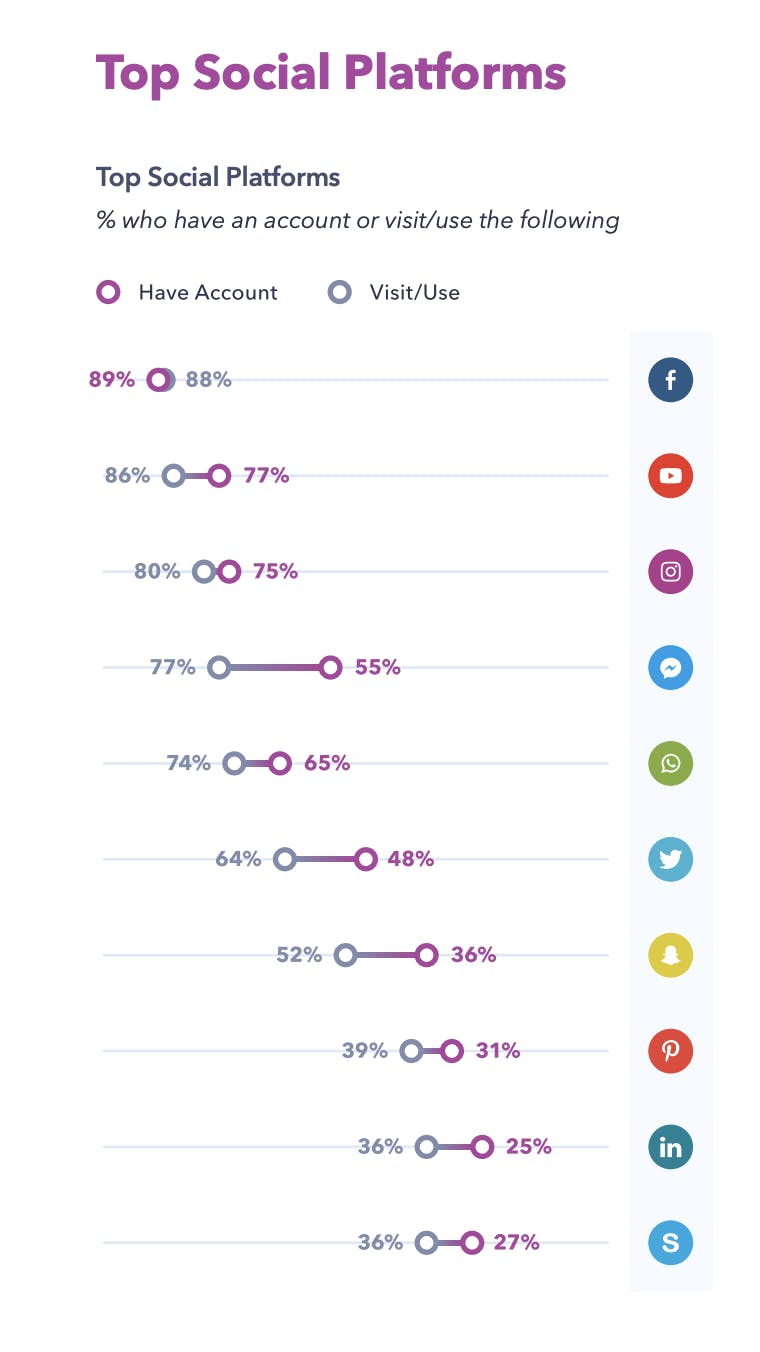It includes news about social shopping, marketing budgets, news consumption, and more. Don’t forget to check out the Internet Statistics Database, too.
Enjoy, one and all.
Interest in social shopping rises 38% in 12 months
New research from Bazaarvoice has revealed that there has been a 38% year-on-year increase in consumers who value the ability to discover new brands and purchase directly through Facebook and Instagram.
According to the survey of more than 2,000 consumers across the UK, US, France and Germany, one third of UK consumers now think the ability to discover and buy products is of critical importance to their experience of social platforms.
Bazaarvoice’s annual Shopper Experience Index also surveyed more than 500 brands and retailers, revealing that 91% agree that visual content makes for a more engaging shopping experience. 86% agreed this visual content enhances discoverability, while 73% agreed that it increases conversions.

Marketing budgets increase, despite negative predictions
Despite economic uncertainty, UK advertisers invested more in advertising in the first three months of 2019 than during the same period last year. This news comes from the latest IPA Bellwether Report, which revealed surprisingly optimistic first quarter results.
The net balance of marketing executives reporting upwardly revised budgets increased to +8.7% in the first quarter of 2019, with around 21.6% of members having observed spending growth, compared to 12.8% reporting budget cuts.
Digital advertising was the best performing category, with the net balance for internet jumping from +2.1% in Q4 2018 to +17.2% in Q1 2019. Search/SEO also grew from -3.9% to +14.2%, while targeted advertising on mobile was revised up to +3.6% from -2.4%.
It wasn’t all good news, however. Market research, sales promotions, and direct marketing budgets remained in the negative, with net balances of -4.2%, -3.7%, and -3.5% respectively. Meanwhile, a net balance of -2.7% of marketers were optimistic about the financial prospects of their businesses in the first quarter, compared with -0.9% in the previous three months.

Less than 10% of marketers say they will concentrate on digital PR in 2019, despite brand awareness appearing as a KPI
A new survey by Zazzle has revealed that less than 10% of marketers will be making digital PR a priority this year. This is despite the fact that 76% of respondents state brand awareness is a key performance indicator for them.
Further to this, 25% of content marketers say they will be ceasing to participate in offline PR activity, as it has been perceived as an ineffective channel for them over recent years.
Interestingly, a quarter of marketers say they want to target new audiences through content distribution – perhaps a difficult task with less of a focus on digital PR.
Generation Z more likely to discover new brands from influencer endorsements than any other age group
A new report by GlobalWebIndex has delved into some of the stereotypes surrounding Generation Z. For example, do they love influencers? The report states that, yes, Gen Z are 1.5x more likely than average to follow vloggers on social media, and 1.4x more likely to say they use social media to follow celebrities and celebrity news. From a consumer perspective, Generation Z are also 1.25x more likely to discover new brands and products via celebrity of influencer endorsements.
What about Facebook? Despite a lot of talk over the past few years about the troubles of Facebook among younger age groups – with Gen Z preferring alternative platforms such as YouTube, Instagram and Snapchat – membership rates on Facebook have stayed remarkably consistent since Q4 2015, increasing from 84% to 86%. Active engagement has not decreased at all in the last three years; one in every two Gen Z has actively contributed to Facebook in the past month.
For more than daily visits to social platforms, Facebook comes third behind YouTube and Instagram, although it does still narrowly lead Instagram when looking at male Gen Zs only.

Marketers are overlooking consumers’ preferred channels
The DMA’s latest research infographic indicates that there is a disparity between the marketing channels marketers’ use the most, compared with those consumers’ state they prefer.
Email is a clear winner; it is the most commonly used and preferred marketing channel all round. 68% of marketers state that they use email to contact their customers, while 73% of consumers state that email is their preferred contact option.
However, just 30% of marketers state that they use post to contact customers, whereas post is consumers’ second-most preferred marketing channel. 41% of consumers selected it amongst their favourite ways for brands to contact them.
It would appear that marketers place too much value on social media, with 61% stating that they use it to contact consumers. By contrast, just 22% of consumers selected it as a preferred marketing channel, perhaps proving the need for marketers to consider more traditional methods.
Generation Z are unlikely to share news stories on social media
Comscore recently set out to examine the digital news consumption habits of multiple generations of consumers in the US and UK, including Generation X, Millennials and Generation Z.
Results show that – despite a large percentage of people consuming news from social media (including nearly half of Gen Z) – the majority do not share it. In the US, just 16% of Gen Z said they would share news stories via social media, compared to 25% of millennials. Similarly in the UK, 16% of Gen Z said they are likely to share news on social compared to 23% of millennials.
Another interesting takeaway from the report is that Generation Z are driven less by news brands and more by the delivery vehicle, with smartphone screens predicted to be the next key distribution battleground.
In the US, 66% of Gen Z say they use the news application that comes with their mobile device, compared to 53% of Gen X. And for 38% of Gen Z, built-in phone news apps are the source of news they use the most, versus 27% of Gen X.


Comments